I. The Fall of the Evil Empire
A. Aging Soviet Leadership—One of the concerns about Ronald Reagan was his advance aged when he was elected—but he was younger than either of the two Soviet Union premiers who held office in Reagan’s first term in office
B. The Soviet War in Afghanistan—in order to prop up a Soviet satellite government in Afghanistan, the Soviet Union sent troops to that country in 1979.
a. Olympic Boycott—In response to this Soviet “aggression,” US President Jimmy Carter decided to boycott the Olympic Games scheduled to be held in Moscow in 1980. This was not a popular decision with Olympic athletes, of course, but it prevented the Soviet Union from gaining a larger propaganda victory—and revenue from the Games.
b. Charlie Wilson’s War—the difficulty the Soviet Union faced in Afghanistan was seen by some in the United States as an opportunity to further that difficulty, and so clandestine support for the Afghan resistance—the mujahideen, who later were transformed into the Taliban—seemed a way to involve the Soviet Union in a proxy war at low cost to the United States. These Afghan rebels welcomed US aid at this time, however, as well as their Muslin co-religionists from around the globe, including the scion of a wealthy Saudi family, Osama (or Usama) bin Laden.
II. Re-igniting the Cold War
A. Détente—Under Nixon, the United States had pursued the “normalization” of relations with the Soviet Union (as well as establishing relations with Communist China, to play one against the other for US gain). This policy had been pursued as well by the Carter Administration; under Reagan, however, who viewed the Soviet Union as the “evil empire” referred to above, this policy was abandoned in favor of “tougher” rhetoric.
B. Arms build-up—in reaction to the events of Vietnam, and the move toward “normalization” of relations with the Soviet Union—as well at the economic stresses of the mid-1970s—had led to a diminishing amount of money spent on the military. Reagan reversed this trend, despite his promises to trim the federal budget—“Defense is not a budget item.”
a. “Winning the Cold War”—Reagan advocates claim that this policy was instrumental in the United States “winning” the Cold War, arguing that the economic pressure the arms build-up placed on the Soviet Union was a leading factor in the fall of the Soviet Union. The only problem with this argument is that there is no evidence that the Soviet Union made any attempt to meet this challenge with an arms build-up of their own. The demise of the Soviet Union, this suggests, came from economic problems that existed before the Reagan administration came to power.
C. Proxy Wars of Our Choosing
a. Sandinista Revolution—the Sandinistas were a guerrilla force fighting against the Nicaraguan dictator Anastacio Somoza. Helped by advisors from Fidel Castro’s Cuba, and combined with the lack of support by the Carter administration for the Somoza regime (in this instance, Carter’s stated policy of not supporting dictators was actually carried through), led to the establishment of a socialist democracy in Nicaragua—much to the consternation of old Cold Warriors.
b. Lebanon—the lack of a solution to the Palestinian homeland crisis since 1948 had destabilized the Middle East—in particular Lebanon, which was home to many of the largest Palestinian refugee camps. These camps, which by the Reagan administration had been home for two generations of displaced Palestinians, produced a number of disaffected young men (and a few women), who saw the only solution to their predicament being acts of terror carried out against the “occupiers” of their homeland (Israeli Jews). This in turn led to Israeli retaliation, as well as, by late 1982, the Israeli army turning a blind eye to the slaughter of Palestinian refugees by Christian Lebanese militias in the largest camp. This led the Reagan administration to step into what had by this time devolved into a Lebanese civil war, and attempt to maintain the peace. This worked initially, but as soon as Marines were perceived to take sides, they became targets for terror, and the suicide bombing of the barracks resulted in 241 military deaths. Although the Reagan administration made retaliatory threats, US military personnel were pulled to ships off shore, eventually out of the Mediterranean, as Lebanon sunk into a decade-long civil war.
c. Grenada invasion—This invasion was launched almost immediately after the disaster in Lebanon. Ostensibly the result of “threats” to a substantial number of US medical school students (Grenada was a favorite location for students unable to get into US medical schools) by government instability, in reality it was an opportunity to claim a victory against the Communist threat (the overthrown government had allied itself with Cuba)—and a chance to distract the American public from events in Lebanon.
d. Iran-Iraq War—with Anwar Sadat in disfavor in the Arab world due to the peace treaty he made with Israel, a power vacuum led Saddam Hussein to believe he could become the new leader of the Arab world. To achieve that, however, he felt it necessary to neutralize his non-Arab neighbor, Iran. Iran was still in the midst of its revolutions, and the time seemed ripe. With the blessing of the United States, and with some military assistance being provided after the American Embassy hostage crisis, the Iraqis had much initial success. The Iranians were able to turn the tide by the mid-1980s, however, and the war devolved into a bloody stalemate that included the use of biological and chemical weapons by the Iraqi forces—procured with some assistance by the United States.
e. Iran-Contra Scandal--in Reagan's second term, information came to light that indicated that the United States--despite its proclaimed policy of not making deals for hostages--had in fact traded arms to Iran (of all places) in return for government officials there appealing to Hezbollah in southern Lebanon to release some American hostages. The money the United States made from selling arms to Iran was then funneled to anti-government forces in Nicaragua--the "Contras'--in direct violation of the Boland Act. Reagan denied any direct knowlege of these actions, but the investigation and scandal hungover much of the rest of his second term. Eventually, 11 members of the administration were initially convicted of violating the law; many of those were later released after successful appeals, and those who remained in prison were later pardoned at the end of Bush I's presidential term.
III. Reagan’s Second Term
A. Influence of Nancy Reagan—President Reagan’s most trusted advisor was his wife, Nancy. Often derided in the press because of her trust in astrology, by her husband’s second term she was very concerned about his legacy, and did all in her power to see that that legacy would be something positive.
B. Rise of Mikhail Gorbachev—Gorbachev was of the first generation of Soviet leaders who had not come into the Party when it was controlled by Stalin. While he sought to maintain Party control of the governing apparatus, he also sought to implement a number of reforms to rejuvenate the Soviet economy, and to provide a slightly more open society.
a. Reykjavik Summit—meeting between Reagan and Gorbachev in Iceland; although no agreement was reached at the summit itself, this did lay the groundwork for the arms reduction agreements that were reached between the two countries.
IV. Fall of the Soviet Bloc
A. George H. W. Bush—with the end of Reagan’s second term, his vice-president George Bush was elected, and was president when the end of the Cold War occurred.
a. Berlin Wall—East German officials were attempting to implement moderate reforms, but without the threat of Soviet Tanks, the people in East Germany—and in particular East Berlin—were able to take matters in their own hands, and speed things along. Much to the surprise of American political leaders, in fact.
b. The End of History—a foreign policy scholar named Francis Fukuyama wrote a book by that title, since he predicted the spread of democracy (and capitalism) throughout the world since the threat of communism had been stifled.
c. Operation Desert Storm--a second attempt by Saddam Hussein to regain prominence in the Arab world began with the Iraqi invasion of Kuwait. The threat this invasion had for Saudi Arabia (which Kuwait borders), rather than concerns about Saddam controling the Kuwaiti oilfields or the right of self-determination for Kuwaitis, precipitated the allied invasion, led by the United States. The permanent placement of troops on the Saudi peninsula (another "infidel" invasion) that upset a number of devout Muslims--including Osama bin Laden
Tuesday, April 26, 2011
Sunday, April 24, 2011
Weekly Assignment 15
In very broad terms, compare the decades of the 1930s and the 1970s. How were they alike? How were they different?
Globalization and Middle America
I. Rise of the New Right – built on the ashes of the Goldwater fiasco in 1964, the Republican Party targeted white suburbanites, and particularly those suburbanites living in the South and West
A) Watergate and Its Aftermath—Although apologists for Nixon point out that—rightly—that Nixon was not the first president to abuse the power of his office to strike back at his enemies. But Nixon was the first to do this in a systematic fashion, and to use the powers of his office to attempt to subvert a criminal investigation into the attempt on the part of his campaign to fix a national election.
1) The Watergate break-in—the so-called “third-rate burglary” was an attempt to plant illegal listening devices at the headquarters of the Democratic National Committee.
B) Tax revolts – conservatives were able to use the growing distrust against government to feed a movement to choke off funds for the government, namely taxes.
1) California Proposition 13 – sold the idea that taxes merely funded wasteful government spending, particularly for things like education, welfare, and other social programs
2) Rise of “code” language – while it became unacceptable to use racial slurs in the 1970s and 1980s, this did not mean that race disappeared as an issue in American politics—only that these references to race were now used in a “code” language, like “welfare queens” and “drug lords.”
C) Christian coalitions
1) Southern Christian academies – with the implementation of Brown v. Board of Education, white Christian academies opened as a way for parents to avoid sending their children to integrated schools. The Carter administration tried to end the tax breaks these led to these various groups organizing to resist this
2) Southern televangelists – preachers like Jerry Falwell and Pat Robertson used the technology of television to expand the scope (and number of contributors to) their “mission.”
3) Reactions to gender politics
(a) Abortion – Roe v. Wade linked control of reproductive rights to a woman’s constitutionally guaranteed rights to privacy. To social conservatives, this upset gender roles and traditional patriarchy, and was considered an attack on “the right of a husband to protect the life of the child he fathered in his wife’s womb.”
(i) Opposition of Catholic Church – while the Church may not speak for all of its female members on this issue, it was able to mobilize a great deal of opposition to the decision.
(b) Opposition to the Equal Rights Ammendent – as the long sought-after ERA got closer to passage by the states, political opposition to the Amendment got more heated; this amendment would have simply recognized legally the changes that had largely already taken place in the United States. Right-wing politicians like Phyllis Schafly, Jerry Falwell were able to distort its effects and change (by comparing it to the perceived slights whites received under Affirmative Action programs) and sway public opinion about ERA enough to prevent its passage.
(c) Gay Pride movement – the Stonewall Riot in Greenwhich Village New York signaled that gays would no longer accept the harassment and stigmatization that they had received previously. As gays “came out of the closet,” however, they met increasing opposition from politicians on the Right.
D) Right turn of the Democratic Party – after the McGovern disaster of 1972 (who many party members felt was too liberal), and Carter’s victory in 1976 (who was certainly more conservative than many of the voters who voted for him), the Democratic Party became increasingly more conservative in its movement toward “the center.”
1) Disenchantment of the poor – rather than mobilize voters who had historically made up their voter base (minorities, blue collar workers, and the poor), Democrats began to compete for the same suburban voters that Republican candidates were pursuing—white suburbanites
(a) Decline of trade unions and urban machines – unions and machine politics had traditionally mobilized Democratic voters, and as these institutions declined, so did their effectiveness
E) Election of Ronald Reagan – two bit actor, former president of the Screen Actors Guild, became spokesman for the vehemently anti-union General Electric Company in the 1950s, and began a rapid rightward descent.
1) Presidential policies
(a) Cut taxes – for the rich, anyway; Reagan got Congress to cut taxes for the rich from 73% to 28%, but taxes for the poor actually went up, because they were hit with an increase in state and local taxes to make up for the shortfall as a result from the decline in federal tax revenue
(b) Cut social programs – Reagan cut much spending on social programs, like welfare
(c) Increase defense spending – corporate welfare for selected industries, fed boom on the West and East coasts (see below)
(d) Results – federal tax revenues plummeted by $750 billion, and generated staggering federal deficits of $150 billion and $200 billion, which kept the prime interest rate in double digits.
F) Reagan boom – the Reagan years were beneficial for a small, select group of people, but the era was one of increasing disparity between the few rich, and the increasing number of poor
1) Growing disparity – between 1977 and 1990, the income of the richest fifth of the population grew by one-third, and that of the top one percent almost doubled; but the total income of the bottom 60 percent of Americans actually fell, and the incomes of the poorest Americans fell most sharply.
II) Reaganomics and its Effects on Working People
A) Undermining of Unions – perhaps the greatest effect of Reaganomics was that it undermined the financial security of working-class people, by undermining the unions that represented their unions.
1) The Reagan Recession (1981-1983) – one of the first effects of supply-side economics, or “Reaganonimics,” as it came to be called, was one of the worst recessions of the post-war era.
(a) Demand from corporations for give-backs – corporations in financial trouble went to unions and its workers, and demanded concessions to remain in business. Competitors then went to their unions and workers, to demand concessions to remain competitive. The cumulative effect of this was at best to freeze the wages of working-class, and at worst to undermine the wage structure.
B) Toledo AP Parts Strike--fifty years after the Auto-Lite strike, a Toledo firm provoked a strike by its unionized workforce. Despite the support of a mobilized community, the union and its workers largely returned to work months later largely on the company's terms. The company, however, quickly discovered that despite this "victory," however, the company quickly discovered that they were still unable to compete in the marketplace, and with a decade were out of business.
C) Workers in Decatur, Illinois – Decatur is a small town in central Illinois, rising out of the prairie, which had a diversified (for the Midwest) manufacturing base, but which witnessed the full aftereffects (or aftershock, to use a nuclear analogy) of Reaganomics.
1) A.E. Staley – locally-owned agricultural goods manufacturer, manufactured corn starch, corn syrup, soy products. This company resisted buyouts through the early 1980s, but by the end of the decade was bought out by a London-based food processor.
(a) Demand for 12 hour, rotating shifts – in order to more “efficiently” use its workers, management wants its workers to work twelve hour shifts, and do away with shift pay differentials; it also wants workers to move from one shift to another every other month (describe havoc this plays with lives of workers with families)
2) Firestone – the tire industry was one of the largest casualties of the merger-mania of the 1980s, and Firestone was bought by Japanese manufacturer Bridgestone.
(a) Demand for twelve-hour, rotating shifts; do away with annual pay increases—instead, have cost of living increases and productivity incentives.
(b) Provoked strike – this strike proved costly not only to many workers (who lost their jobs, some temporarily, to strikebreakers), but ultimately to the company, as well—the replacement workers manufactured the AT Wilderness tires that went on Ford Explorers--and proved to be inferior tires, subject to blowouts that caused numerous rollover accidents, and led to Fords abandonment of Firestone tire (after an 80-year business association, and at least one marriage between family members).
3) Caterpillar – the industry leader in the production of heavy equipment at the time it provoked a strike by UAW members over concessions that it wanted in its contract—namely, a six-year contract, complete control over production decisions. In the end, this company handed the UAW the worst defeat in its history.
III) The Reagan Hangover – is suffered by working people in this country, of course.
Saturday, April 23, 2011
History and Film
Students in the America from 1865 class have been provided an extra-credit assignment, which consists of writing a review of a movie that has a historical theme. This list of 100 movies reviewed by historians might prove helpful for this assignment.
Tuesday, April 19, 2011
White Backlash and the End of the Modern Civil Rights Era
I) Changing character of the Civil Rights Movement
A) The Middle-Class Movement – the early struggle for civil rights revolved around issues that required money to take advantage of—being served in restaurants, ability to sit where one pleased to ride on a bus, etc. These rights, although they were initially challenged by whites, were rather quickly extended by the white power structure
1) Working-class sympathies – in order to achieve this, middle class blacks had to seek out working-class blacks to achieve these bourgeois aims.
B) The Working-class Movement – as the civil rights movement began to build upon its successes, it was transformed slowly into a movement seeking political justice and economic justice, which encountered much more active resistance.
1) Voting rights – SNCC, after the successes that it achieved in the arena of the right to spend money for equal value, moved into the arena of seeking political rights, which encountered much more resistance.
(a) Albany GA
(b) Birmingham AL
(c) Freedom Summer in Mississippi
2) Black Power – the fallout from Freedom summer splintered the youth in the civil rights movement; both SNCC and CORE, which had always been bi-racial, asked white members to resign from the respective organizations, and they both became black-only.
(a) Stokley Carmichael – one of the principle leaders of SNCC, Carmichael became increasingly frustrated with what he perceived to be the lack of progress on the civil rights front, and was the leading proponent of the “black power” direction of SNCC.
1) Malcolm Little – was born in Omaha, Nebraska on May 11, 1925. His father, a Baptist preacher, was an outspoken advocate for black equality and civil rights, and the family was forced to move three times before Malcolm was four years old. In 1931, Malcolm’s father, Earl Little, was murdered in Lansing, Michigan. Several years later, Malcolm’s mother had a nervous breakdown, and the family was split-up among relatives. In eighth grade, Malcolm left school after his favorite white teacher told him that his ambition to be a lawyer “wasn’t a realistic dream for a nigger” (a remark that she probably meant to be kindly). Malcolm became a petty crook in New York and Boston, before being convicted and jailed 1946. Realizing that he was wasting his life, Malcolm spent his time in prison on a program of self-improvement, when his brother Reginald introduced him to the Nation of Islam faith.
2) Nation of Islam – this sect was founded in Detroit in the early years of the Depression by Wallace Fard (aka Wali Farad Muhammad). Fard “disappeared” in 1934, and leadership of the sect was taken over by Fard’s disciple Elijah Muhammad. The Nation of Islam preached the rejections of Christianity (the white man’s religion, which was used to subjugate blacks), the embracement of Islam (as filtered through Elijah Muhammad), and the promotion of black pride.
(a) Discuss the duality of ending segregation – by ending segregation, in many areas black independence was also undermined; black businesses depended upon blacks having no choice but to shop in the neighborhood, because these businesses were not able to ever get big enough to compete with chain stores (much like many white small businesses)
(b) Discuss the ying and yang of the Civil Rights Movement, as it became personified in MLK and Malcolm X; Movement ultimately was about respect, and self-respect.
(c) Ultimately, Malcolm X rejected the creed of the Nation of Islam (after making a pilgrimage to Mecca, and finding that he could embrace white Muslims as brethren), and his estrangement from the Nation of Islam eventually cost him his life in 1965, when three assassins from that organization murdered Malcolm in February of that year.
D) Martin Luther King – King, after Malcolm’s death, moved further toward his position, and began to place greater emphasis upon black pride. MLK also began to distance himself from the government’s position on Vietnam, which increased tension between himself and LBJ. MLK also began to realize that civil rights without economic justice was rather hollow, and he began to support efforts to create economic justice—which is why he was in Memphis in March and April of 1968.
E) Civil Rights in the north – de facto segregation in the north caused black anger to explode just as the fruits of the Civil Rights Movement were reaching fruition.
1) Watts (1965) – the explosion of African American frustration with their exclusion from prosperity in the North led to six days of rioting and looting in Central LA; this was the first of the “long hot summers” of the 1960s
2) Detroit and Newark (1967) – (and Toledo) conflicts with an overwhelmingly white police force touched off several days of rioting in Detroit, resulting in numerous deaths (overwhelmingly black), as well as looting. Similar tensions between the police in Toledo and the black community here resulted in a much smaller scale insurrection in the heart of the black community here, near Dorr Street and Detroit Avenue.
II) The Counterculture
1) Woodstock – “Three Days of Peace and Love” – a disaster waiting to happen, but the “hippy vibe” averted what could have happened in the fall of that year
B) Altamont – free concert near San Francisco, featuring Jefferson Airplane, Grateful Dead, and Rolling Stones—and “security” by the Hell’s Angels. “Hippy vibe” did not work its magic here, resulting in numerous injuries from conflicts with the Angels (including singer Marty Balin of the Airplane), and one death (concert-goer knifed by gang of Angels).
C) The Conquest of Cool – advertising firms begin using symbols of the counterculture to sell commodities
1) “The Man” Can’t Bust Our Music – advertising campaign by CBS Records (part of one of the largest media conglomerates of that time)
2) Volkswagen
3) Levi Strauss and Company
D) New Left legacy
1) Feminism – many women in the “movement” quickly got fed up with rhetoric which proclaimed ideals of equality, while relegating them to making coffee, servicing male members (Stokely Carmichael quote on his position on women in SNCC)
(a) Drive for equal pay; equality of opportunity
(b) Day care
(c) Readjustment of family roles – common sense about gender roles
E) Racism – no longer acceptable, in any form, in most forums—although it certainly still exists.
(a) Martin Luther King Day – the fact that we have set aside a day to honor a man who was spied on by the FBI, mistrusted by the presidents he dealt with, and openly despised by millions of white people says a lot about the effect of the Civil Rights Movement and the New Left had upon this country. Opposition to the establishment of MLK day in Arizona by Gov. Evan Meacham (after a threatened economic boycott) led to his impeachment.
2) Legacy of moralism in politics – although the moralistic tone of politics from the 1960s had been appropriated by the Right (largely the Christian Right), that was brought to the fore by the New Left, which insisted that the United States live up to its high expectations.
F) Environmentalism – the environmentalist movement is directly related to the legacy of the New Left, and it’s questioning of corporate hegemony.
G) Gay Liberation
1) Stonewall Riots--the Stonewall Inn, in Greenwich Village was frequented by many of the most marginalized people in New York City--particularly drag queens, transgendered people, and effeminate youg men. NYC police regularly harrassed patrons in "gay" bars, but on June 28, 1969, gays in Greenwich Village decided to fight back.
G) Gay Liberation
1) Stonewall Riots--the Stonewall Inn, in Greenwich Village was frequented by many of the most marginalized people in New York City--particularly drag queens, transgendered people, and effeminate youg men. NYC police regularly harrassed patrons in "gay" bars, but on June 28, 1969, gays in Greenwich Village decided to fight back.
III) White Backlash – as the civil rights movement moved north, it encountered the same kind of resistance that had happened in the South all over again.
I) Southern Strategy of Republican Party
A) 1964 Election – despite Johnson’s landslide victory over Barry Goldwater, the strategy that the Republican Party had followed for the past 37 years was established; undermine Democratic support in its former stronghold in the South, but appear moderate enough on issues to retain support in the Southwest and West.
1) Barry Goldwater – only senator outside of the South to vote against the Civil Rights Act of 1964, ostensibly because it undermined the constitution.
B) 1968 Election – Nixon’s southern strategy undermined by the candidacy of George Wallace, and it nearly undermined enough of Nixon’s support to cost him the election. However, Humphrey’s campaign caught fire too late (after he had virtually turned over the running of the campaign to the AFL-CIO), and Nixon was elected
1) Internal dissension of Democratic Party – liberal coalition coming apart as a result of the War in Vietnam.
1) Southern Strategy -- – Nixon saw racial conflict as a means to divide the Democratic Party and ensure a Republican majority
(a) Kevin Phillips and The Emerging Republican Majority – pointed out that the South and Southwest were the two areas of the country growing the fastest, and were largely conservative; and that blue-collar ethnics were becoming disaffected with the racial policy of the Democratic Party.
(b) Benign neglect of problems of African Americans – they would never vote Republican in large number for the foreseeable future, anyway.
(c) Delaying tactics on court-ordered desegregation of schools -- allowing the problem to fester allowed the blame to be place on Democrats, and heightened anxieties.
2) Affirmative Action – Nixon administration transforms Affirmative Action into set asides for minorities.
(a) Philadelphia Plan – proposed by Secretary of Labor George Schultz; executive order which stipulated that workforce on government contract jobs had to reflect racial make-up of the area; this alienated a number of white blue-collar workers in the building trades, who had long benefited from family and friend connections to gain building trades jobs—to the exclusion of minorities
C) 1972 Election
D) 1976 Election – the rise of the “outsider” candidate.
1) Jimmy Carter – southern Democrat (and no friend of labor), first to run as a Washington outsider.
(a) Appointment of Paul Volker as chairman of the Fed – Volker put a choke hold on the economy by raising prime lending rate to unheard of heights to bring inflation under control
1) Ronald Reagan – the economic malaise, coupled with the hostage situation in Iran, made Carter immensely unpopular as a president.
Sunday, April 17, 2011
The American War in Vietnam
Country Joe McDonald and the Fish at Woodstock
I) Vietminh as US allies
A) Vietminh and the OSS
1) Ho Chi Minh – Ho was a Vietnamese nationalist who admired the works of Marx, and wanted to establish a socialist state in his country
2) Vietminh armed forces – with military supplies from the US, the Vietminh fought an effective guerilla war against the Japanese.
B) Japanese surrender – when the Japanese surrendered, the Vietminh expected the US to continue to support them in their effort to establish an independent country
II) French attempt to re-colonize – the Vichy government (the government which controlled France during the Nazi occupation of that country) had surrendered to the invading Japanese, but many French rubber plantation owners had in fact cooperated with the Japanese, and were allowed to maintain their property.
A) Vietminh resistance – not surprisingly, the Vietminh resisted the attempted French re-colonization, and maintained their guerilla war against the occupying forces.
B) US aid to France – the US provided some military assistance to their NATO alliance partners, in the form of credits and some military advisers
1) Geo-political decision – the officials of the US government decided that it was more politically important, in our “Cold War” against the Soviet Union, to make nice with France in their struggle to re-assert colonial control, than to ally with a small, insignificant country with which we had no economic interest, nor any real political interest.
C) French military offensive
1) 1946 – while the Vietminh were still expecting the US to side with them in the dispute, the French forces in Vietnam were able to drive the Vietminh forces out of most of the cities in the country
D) French military defeats – after their initial victories against the Vietminh, the French suffered a series of devastating defeats; in response, the French government changed military commanders in the country.
1) “The light at the end of the tunnel” – soon after taking command of French forces, commander Gen. Henri Navarre declared that “Now we can see victory clearly, like the light at the end of the tunnel.” That is not the last time that phrase is heard in relation to conflicts in Vietnam.
2) Dien Bien Phu – in the jungle near this small hamlet, a large French force was surrounded by Vietminh forces, and after an extensive two-month siege, the Vietminh forced the French survivors to surrender on May 7, 1954.
3) Geneva Accords – at the insistence of the United States, the country of Vietnam was divided “temporarily” along the 17th Parallel, and nationwide elections to choose a government for a unified Vietnam were to be held in 1956
III) Vietnam and the Domino Theory – the so-called Domino Theory was an ideology subscribed to by both liberals and conservatives; a politician who could be portrayed as “soft on communism” effectively signed their own political death warrant.
A) Government of South Vietnam – largely a paper tiger, if not a myth. The government in South Vietnam never enjoyed any widespread popular support; if it were not for the millions and eventually billions of dollars that the US poured in to the country, it would have collapsed of its own inertia long before 1975, when the North Vietnamese Army finally rolled into Saigon. As a secret government study conducted by the Pentagon, and leaked as the famous “Pentagon Papers,” the “government” of South Vietnam was largely a creation of the United States government.
1) Premier Diem – Vietnamese Catholic, he organized a “national referendum” that led to the creation of the Republic of Vietnam. He then won a rigged election to head that government, and maintained control only with US support (eventually, that support from the US amounted to over $1 million a day)
(a) Diem’s only support in the country come from other Vietnamese Catholics (a very small percentage of the population, by the way), and other Vietnamese who had collaborated with the French
2) US $$$ -- the United States was positive that given a choice, no country would want to pass up the political and economic advantages that could be provided by alliances with the US
3) National Liberation Front – in December of 1960, the National Liberation Front was established by forces loyal to Ho in the south; they were popularly known in the US by the derogatory term given them by forces loyal to Diem in the south, Viet Cong (which became “VC” or “Charlie,” eventually, in US GI slang)
B) Kennedy and Counterinsurgency – Kennedy was elected over Richard Nixon (barely) in part because of his promise to “close the window of vulnerability” that he claimed existed and threatened the security of the US.
1) Counterinsurgency – the creation of a Special Forces branch in the Army, which supposedly would be able to respond to Communist aggression around the globe
(a) “Green Berets” – to train South Vietnamese forces in techniques of counterinsurgency, and dry up the sea of support which the National Liberation forces swam in (an allusion to an idea Mao espoused, where he compared guerilla forces to fish in a sea, undetectable among other fish.
(b) Cowboys and Indians – the Vietnamese forces were an unconventional enemy that enjoyed widespread support among the people of the rural countryside—which in Vietnam, meant most of the people living in the country.
(c) Lack of success – the lack of success that the South Vietnamese forces enjoyed in their counterinsurgency battles meant that more and more money and material was flowing into the country from the US, as were more and more military advisors, to “support” the Army of the Republic of Viet Nam (ARVN).
IV) Escalation of US Involvement
A) Gulf of Tonkin – the USS Maddox was allegedly “attacked” while offshore from North Vietnam, in disputed seas (North Vietnam claimed the area as sovereign territory, while the US maintained that the waters were international waters).
1) Gulf of Tonkin Resolution – after the alleged attack, President Johnson asked Congress for, and received, authorization from Congress to “take all necessary measures to repel armed attacks against the forces of the United States and to prevent further aggression.”
(a) Gulf of Tonkin Resolution was passed unanimously in the House, and only two dissenters in the Senate (both of whom lost in the next election that they faced.
B) Da Nang
1) USMC – on March 8, 1965, a large force of Marines landed at Da Nang to reinforce an airfield there; by March 13 the Marine expeditionary force was joined by 40,000 other troops, and by late June of that year the Army commander in Vietnam, Gen. William Westmoreland, had received authorization to commit American forces to battle wherever he saw fit.
C) The Undeclared War – as more troops were committed, soldiers and Marines from the United States began to assume more of the responsibility of the fighting in this undeclared war
1) Search and destroy missions – troops from the US forces engaged in the small troop tactic of so-called Search and Destroy missions, where platoons ventured into the jungles of Vietnam, looking for enemy to engage and hopefully kill, or at least locate so that air support could be called in. Most of the time, these patrols found nothing. The fault of these tactics was, of course, that the enemy only engaged their pursuers at the time and place of their choosing
2) The Air War – the US dropped four times the amount of bombs in Southeast Asia than were used by all belligerents during World War II; but this bombing campaign was relatively ineffective against an enemy that was fighting a low tech war anyway—there simply was not much infrastructure to destroy.
3) Weekly body count – each Friday, the military released figures of casualties, which was how the “score” was kept. Each week, the total number of casualties for the North Vietnamese Army and the National Liberation Front, which inevitably were higher than the combined totals for the United States and the ARVN—so we were winning the war, right?
4) Selective Service – because of college student deferments, the burden of service in this war fell inordinately upon the working-class; in fact, Harvard, Yale, and Princeton (the three premier universities in the country) between them only had one alumnus die. George W. attended Yale, drank his way through four years, and then conveniently “served” in the Air National Guard; Albert Gore, Jr. graduated from Princeton, and served in Vietnam—as a correspondent for Stars and Stripes, the newspaper written for members of the military.
D) Tet – Tet is the name for the Vietnamese New Year; after 1968 the word Tet is associated with the beginning of the end of US involvement in the war in Vietnam.
1) “The light at the end of the tunnel” – in January 1968, Gen. Westmoreland declared that the end of the war, now three years along in the involvement of US forces, was at hand, that officers there were confident that they were able to see the light at the end of the tunnel.
2) The Tet Offensive – just after Westmoreland made his observance about the end of the war, the National Liberation Front launched its Tet Offensive. This offensive caught the US and South Vietnamese forces completely by surprise, and NLF forces captured several cities in the south (including the center of religious life in Vietnam, Hue), and threatened to capture Saigon. The NVA had coordinated an attack at a Marine camp called Khe Shanh at this time, and held it under siege for several weeks.
3) Result – the effect of the Tet Offensive, from a military view, was a crushing defeat for the NLF and NVA; the US forces eventually defeated the combined force, and retook all of the lost territory; the NLF in particular was decimated.
(a) The end of US involvement – it became obvious to even the most casual observers that the end of the war was no where close to happening; popular support for continued US involvement in the war began to shift dramatically from this point.
(b) This was less a result of the growing protest movement, but increased frustration on the part of the general public at the apparent stalemate in the war.
I) Vietminh as US allies
A) Vietminh and the OSS
1) Ho Chi Minh – Ho was a Vietnamese nationalist who admired the works of Marx, and wanted to establish a socialist state in his country
2) Vietminh armed forces – with military supplies from the US, the Vietminh fought an effective guerilla war against the Japanese.
B) Japanese surrender – when the Japanese surrendered, the Vietminh expected the US to continue to support them in their effort to establish an independent country
II) French attempt to re-colonize – the Vichy government (the government which controlled France during the Nazi occupation of that country) had surrendered to the invading Japanese, but many French rubber plantation owners had in fact cooperated with the Japanese, and were allowed to maintain their property.
A) Vietminh resistance – not surprisingly, the Vietminh resisted the attempted French re-colonization, and maintained their guerilla war against the occupying forces.
B) US aid to France – the US provided some military assistance to their NATO alliance partners, in the form of credits and some military advisers
1) Geo-political decision – the officials of the US government decided that it was more politically important, in our “Cold War” against the Soviet Union, to make nice with France in their struggle to re-assert colonial control, than to ally with a small, insignificant country with which we had no economic interest, nor any real political interest.
C) French military offensive
1) 1946 – while the Vietminh were still expecting the US to side with them in the dispute, the French forces in Vietnam were able to drive the Vietminh forces out of most of the cities in the country
D) French military defeats – after their initial victories against the Vietminh, the French suffered a series of devastating defeats; in response, the French government changed military commanders in the country.
1) “The light at the end of the tunnel” – soon after taking command of French forces, commander Gen. Henri Navarre declared that “Now we can see victory clearly, like the light at the end of the tunnel.” That is not the last time that phrase is heard in relation to conflicts in Vietnam.
2) Dien Bien Phu – in the jungle near this small hamlet, a large French force was surrounded by Vietminh forces, and after an extensive two-month siege, the Vietminh forced the French survivors to surrender on May 7, 1954.
3) Geneva Accords – at the insistence of the United States, the country of Vietnam was divided “temporarily” along the 17th Parallel, and nationwide elections to choose a government for a unified Vietnam were to be held in 1956
III) Vietnam and the Domino Theory – the so-called Domino Theory was an ideology subscribed to by both liberals and conservatives; a politician who could be portrayed as “soft on communism” effectively signed their own political death warrant.
A) Government of South Vietnam – largely a paper tiger, if not a myth. The government in South Vietnam never enjoyed any widespread popular support; if it were not for the millions and eventually billions of dollars that the US poured in to the country, it would have collapsed of its own inertia long before 1975, when the North Vietnamese Army finally rolled into Saigon. As a secret government study conducted by the Pentagon, and leaked as the famous “Pentagon Papers,” the “government” of South Vietnam was largely a creation of the United States government.
1) Premier Diem – Vietnamese Catholic, he organized a “national referendum” that led to the creation of the Republic of Vietnam. He then won a rigged election to head that government, and maintained control only with US support (eventually, that support from the US amounted to over $1 million a day)
(a) Diem’s only support in the country come from other Vietnamese Catholics (a very small percentage of the population, by the way), and other Vietnamese who had collaborated with the French
2) US $$$ -- the United States was positive that given a choice, no country would want to pass up the political and economic advantages that could be provided by alliances with the US
3) National Liberation Front – in December of 1960, the National Liberation Front was established by forces loyal to Ho in the south; they were popularly known in the US by the derogatory term given them by forces loyal to Diem in the south, Viet Cong (which became “VC” or “Charlie,” eventually, in US GI slang)
B) Kennedy and Counterinsurgency – Kennedy was elected over Richard Nixon (barely) in part because of his promise to “close the window of vulnerability” that he claimed existed and threatened the security of the US.
1) Counterinsurgency – the creation of a Special Forces branch in the Army, which supposedly would be able to respond to Communist aggression around the globe
(a) “Green Berets” – to train South Vietnamese forces in techniques of counterinsurgency, and dry up the sea of support which the National Liberation forces swam in (an allusion to an idea Mao espoused, where he compared guerilla forces to fish in a sea, undetectable among other fish.
(b) Cowboys and Indians – the Vietnamese forces were an unconventional enemy that enjoyed widespread support among the people of the rural countryside—which in Vietnam, meant most of the people living in the country.
(c) Lack of success – the lack of success that the South Vietnamese forces enjoyed in their counterinsurgency battles meant that more and more money and material was flowing into the country from the US, as were more and more military advisors, to “support” the Army of the Republic of Viet Nam (ARVN).
IV) Escalation of US Involvement
A) Gulf of Tonkin – the USS Maddox was allegedly “attacked” while offshore from North Vietnam, in disputed seas (North Vietnam claimed the area as sovereign territory, while the US maintained that the waters were international waters).
1) Gulf of Tonkin Resolution – after the alleged attack, President Johnson asked Congress for, and received, authorization from Congress to “take all necessary measures to repel armed attacks against the forces of the United States and to prevent further aggression.”
(a) Gulf of Tonkin Resolution was passed unanimously in the House, and only two dissenters in the Senate (both of whom lost in the next election that they faced.
B) Da Nang
1) USMC – on March 8, 1965, a large force of Marines landed at Da Nang to reinforce an airfield there; by March 13 the Marine expeditionary force was joined by 40,000 other troops, and by late June of that year the Army commander in Vietnam, Gen. William Westmoreland, had received authorization to commit American forces to battle wherever he saw fit.
C) The Undeclared War – as more troops were committed, soldiers and Marines from the United States began to assume more of the responsibility of the fighting in this undeclared war
1) Search and destroy missions – troops from the US forces engaged in the small troop tactic of so-called Search and Destroy missions, where platoons ventured into the jungles of Vietnam, looking for enemy to engage and hopefully kill, or at least locate so that air support could be called in. Most of the time, these patrols found nothing. The fault of these tactics was, of course, that the enemy only engaged their pursuers at the time and place of their choosing
2) The Air War – the US dropped four times the amount of bombs in Southeast Asia than were used by all belligerents during World War II; but this bombing campaign was relatively ineffective against an enemy that was fighting a low tech war anyway—there simply was not much infrastructure to destroy.
3) Weekly body count – each Friday, the military released figures of casualties, which was how the “score” was kept. Each week, the total number of casualties for the North Vietnamese Army and the National Liberation Front, which inevitably were higher than the combined totals for the United States and the ARVN—so we were winning the war, right?
4) Selective Service – because of college student deferments, the burden of service in this war fell inordinately upon the working-class; in fact, Harvard, Yale, and Princeton (the three premier universities in the country) between them only had one alumnus die. George W. attended Yale, drank his way through four years, and then conveniently “served” in the Air National Guard; Albert Gore, Jr. graduated from Princeton, and served in Vietnam—as a correspondent for Stars and Stripes, the newspaper written for members of the military.
D) Tet – Tet is the name for the Vietnamese New Year; after 1968 the word Tet is associated with the beginning of the end of US involvement in the war in Vietnam.
1) “The light at the end of the tunnel” – in January 1968, Gen. Westmoreland declared that the end of the war, now three years along in the involvement of US forces, was at hand, that officers there were confident that they were able to see the light at the end of the tunnel.
2) The Tet Offensive – just after Westmoreland made his observance about the end of the war, the National Liberation Front launched its Tet Offensive. This offensive caught the US and South Vietnamese forces completely by surprise, and NLF forces captured several cities in the south (including the center of religious life in Vietnam, Hue), and threatened to capture Saigon. The NVA had coordinated an attack at a Marine camp called Khe Shanh at this time, and held it under siege for several weeks.
3) Result – the effect of the Tet Offensive, from a military view, was a crushing defeat for the NLF and NVA; the US forces eventually defeated the combined force, and retook all of the lost territory; the NLF in particular was decimated.
(a) The end of US involvement – it became obvious to even the most casual observers that the end of the war was no where close to happening; popular support for continued US involvement in the war began to shift dramatically from this point.
(b) This was less a result of the growing protest movement, but increased frustration on the part of the general public at the apparent stalemate in the war.
Subscribe to:
Posts (Atom)






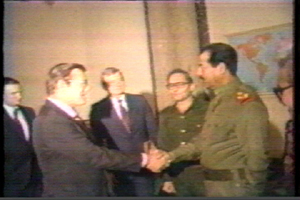

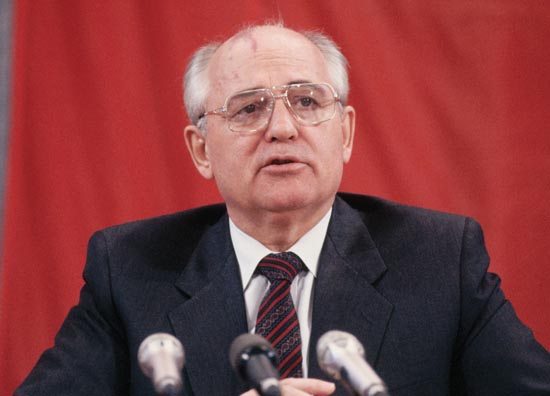



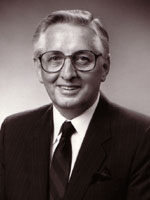








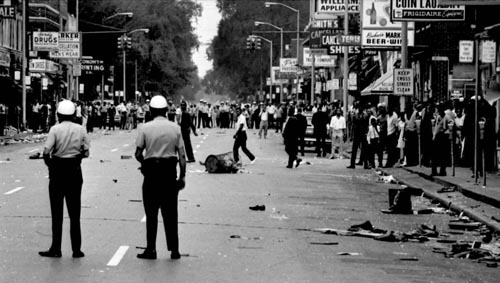

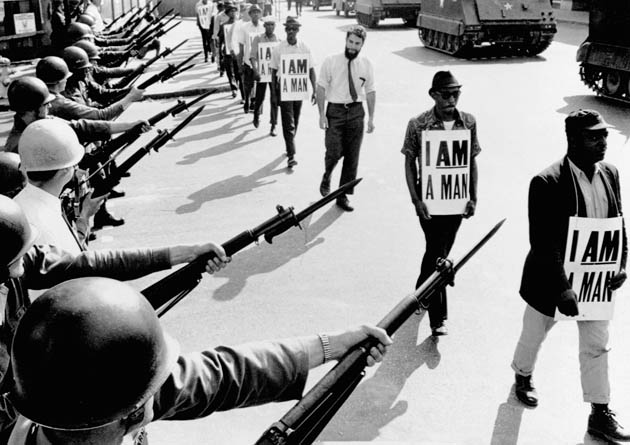

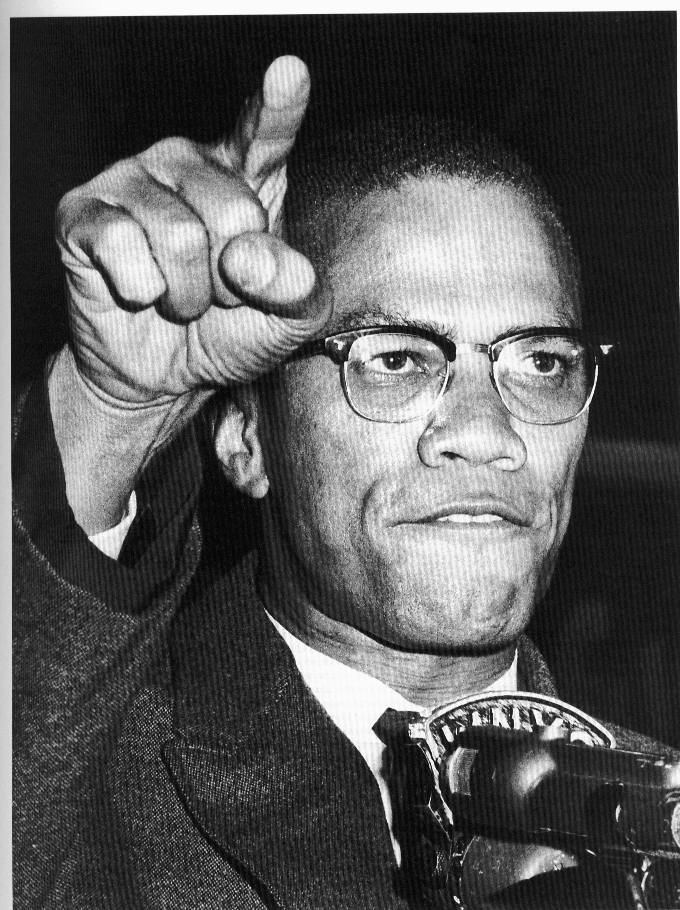
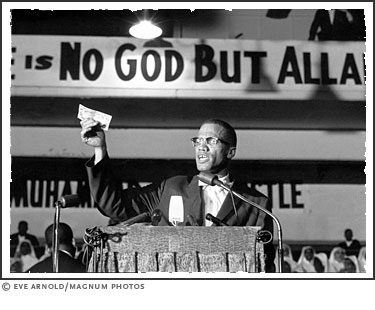






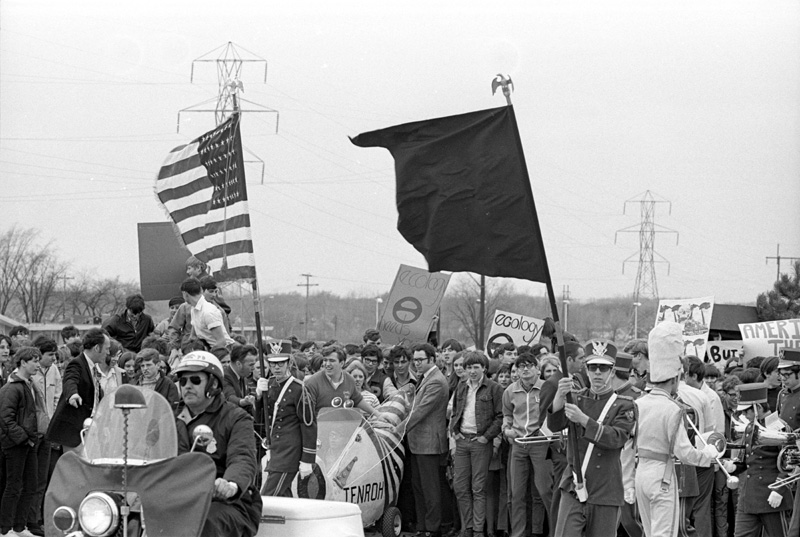





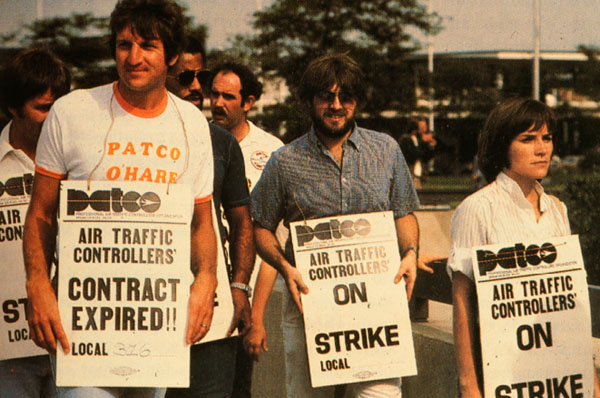

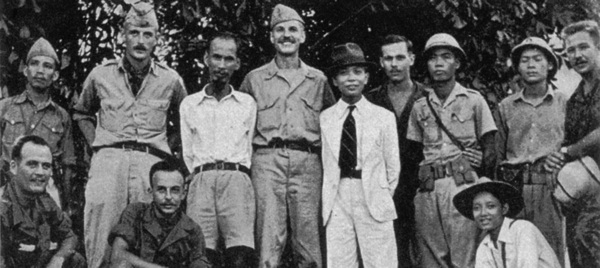


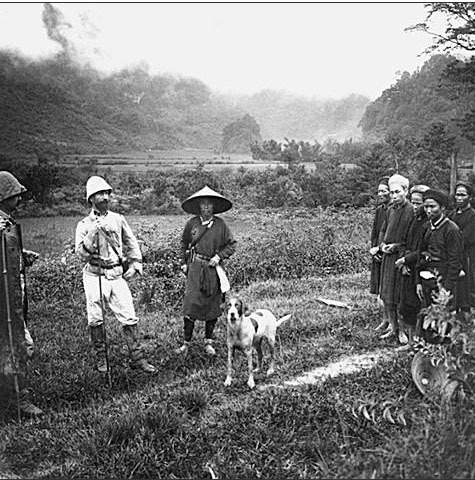


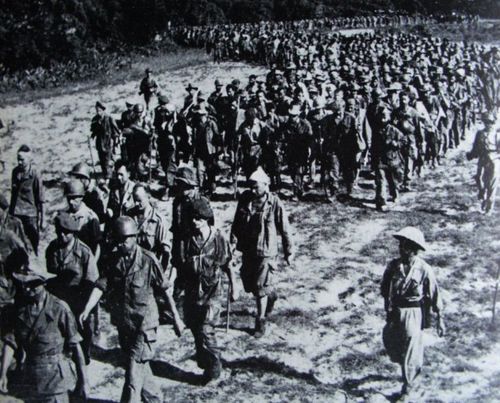



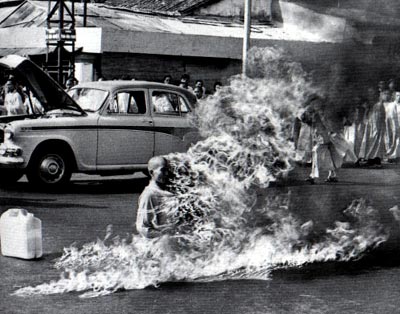
.jpg)



